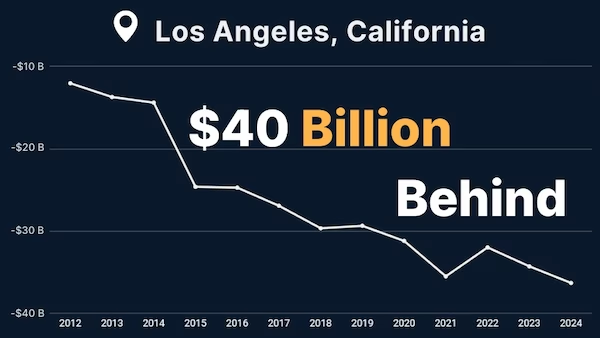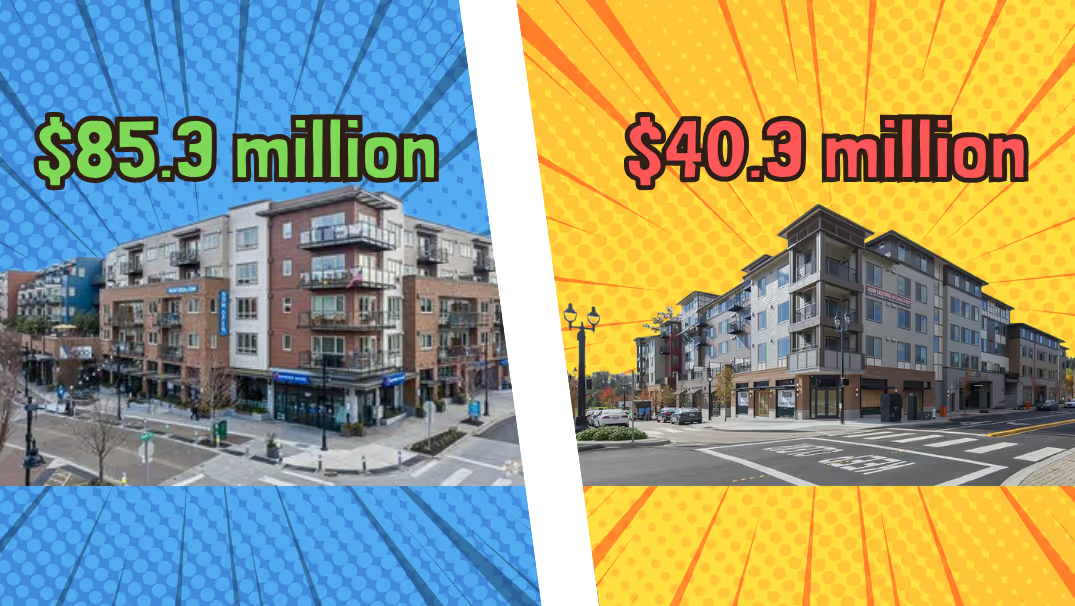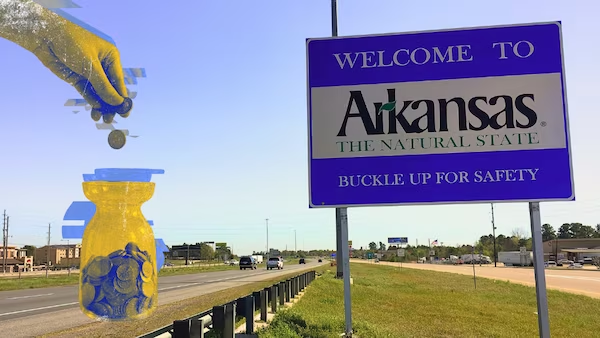Editor's Note: The challenges our cities face are growing, but so is the strength of this movement. Every story we share, every idea we spread, and every tool we build exists because people like you are committed to showing up. Your membership isn’t passive—it’s the momentum that makes change possible.
This is not a social justice argument. I'm not writing this post to shame you into taking some altruistic action for the greater good. What I'm going to present here is pure dollars and cents.
Consider the two following investment options for your personal portfolio:
Option A: Invest in a handful of very large entities. Each comes with a lot of hype yet has a track record of under performing, even dramatically losing money. A look at peer entities shows a consistent track record of failure and decline over time.
Option B: Investment in an expansive portfolio of hundreds to thousands of small to mid-sized entities. None of these have much hype or prestige associated with them. While collectively they have a consistent track record of success, individual entities within the portfolio may be a spectacular boom or a total failure.
A few prestige companies with a long track record of failure or a large number of small companies, each with boom or bust potential but with a general upward trajectory?
It's clear that the preferred option is B. Spreading your money out over many small different investments gives you a large hedge against risk (i.e. don't put all your eggs in one basket). While each small investment could be a bust, it could also boom; broad diversification evens out the risk. In general, the gains over time are positive, although not flashy. There is significant upside potential with little downside risk, the perfect portfolio mix for the prudent investor. And you're a prudent investor, not some Wolf of Wall Street something-for-nothing.
Yesterday I wrote about Lafayette, Louisiana, a perfectly normal American city that shares the basic development pattern most of you have in the places you live. I included a map that shows parts of the city that were profitable -- where the city collects more revenue than is spends -- and parts of the city that were being operated at a loss, where the long term expenditures are greater than the revenue stream.
I've (rather crudely -- I'm not a graphics pro) updated that map to show the parts of town generally full of residences occupied by poor people and parts of town with residences occupied by those that are more affluent. I used the terms "poor" and "affluent" rather loosely. There is no study that breaks this down and we don't have underlying data. That being said, when we were looking for an AirBnB to stay in, we were told to stay away from the neighborhoods marked as "poor" as they are dangerous. When we spoke to law enforcement as part of our study, we received similar insights. A look at Zillow, backed up with an eye test, also suggests that the areas marked poor are indeed occupied by people that are, on average, significantly poorer than those people living in the areas marked affluent.
.avif)
What is obvious here is that the poor neighborhoods are profitable while the affluent neighborhoods are not. Throughout the poor neighborhoods, the city is -- TODAY -- bringing in more revenue than they will spend to maintain the neighborhood, and that's assuming they actually invest the money to maintain the neighborhood (which they have not been). If they fail to maintain the neighborhood, the profit margins will be even higher.
This might strike some of you as surprising, yet it is important to understand that it is a consistent feature we see revealed in city after city after city all over North America. Poor neighborhoods subsidize the affluent; it is a ubiquitous condition of the American development pattern.
As an example, consider what is probably our most famous case study here at Strong Towns, the Taco John's in my hometown of Brainerd, Minnesota, as described in "The Cost of Auto Orientation." The block on the left has been labeled as blight. It's run down and neglected. The block on the right -- same size, same amount of public infrastructure, just a different development approach -- looks shiny and new. Poor versus affluent. The cost to the city is the same but the poor block is worth 78% more, and pays 78% more taxes, than the affluent block.


We see this trend everywhere we've done a model. On a per acre basis, neighborhoods that tend to be poor also tend to pay more taxes and cost less to provide services to than their more affluent counterparts.
How is this possible? Some of my planner colleagues will say it is density, but I've long rejected that simplistic explanation. There is a lot more to it than a simple division problem. For example, in Lafayette those poor neighborhoods tend to have narrower streets, which cost less. The houses tend to be older and so they also tend to occupy the high ground, which was the cheapest place to build way back then (free, natural drainage). The high ground also makes sewer service more affordable; no expensive pumps to operate and maintain. I could go on, but you get the point. The original builders of Lafayette were poor themselves and, even where they weren't, they were culturally pretty frugal. Their building tradition, developed over thousands of years, built as much wealth as possible at the lowest cost with the least long term risk.
So why does this make poor neighborhoods the best investment today? There are three reasons.
First, in comparison, the other investment opportunities are terrible. That map of Lafayette tells a compelling story about the financial failure of all those residential subdivisions with the wide lots, curvy streets and cul-de-sacs. They are financial losers right now and, understanding modern zoning as well as the expectations of the people who have bought there, there is little hope of turning that around. These places are built all at once to a finished state. Today is peak wealth; it's all downhill from here, regardless of how much public investment is made.
Second, it won't take much to see consistently large returns. In these poor neighborhoods, we're not talking about taking $50,000 homes and making them into $250,000 homes. Those kind of projects are hit-and-miss risky and not really scalable anyway. What we're really talking about is taking a neighborhood of $50,000 homes and making them $55,000 homes. That's a solid 10% increase in the tax base. It's wealth that is shared throughout the neighborhood. It's a real gain -- not an illusion -- that is more likely to persist than some kind of one-off project. And it's repeatable. We can nurture 3-5% annual returns out of these depressed neighborhoods for a long, long time. (And, by the way, one quick diversion from dollars and cents....this is also how you avoid displacement and ensure that the gains in wealth actually go to the poor who are responsible for it.)
Finally, the type of investments that these neighborhoods need in order to experience consistent 3-5% returns over time are very small and low risk. We're talking about things like putting in street trees, painting crosswalks, patching sidewalks, and making changes to zoning regulations to provide more flexibility for neighborhood businesses, accessory apartments and parking. If we try some things and they don't work, we don't lose much because they don't cost much. We learn from our small failures and try something else. This is the approach we described in our Neighborhoods First report, a way of building we've now seen repeated in cities like Austin, Memphis and Pittsburgh. We also shared some other ideas last week in Five Low Cost Ideas to Make Your City Wealthier.
American cities can make low risk, high returning investments while improving the quality of life for people, particularly those who have not benefited from the current approach. That is the essence of a prudent, Strong Towns approach. It's critical we get started now because we need strong cities if we are to have a truly strong America.





